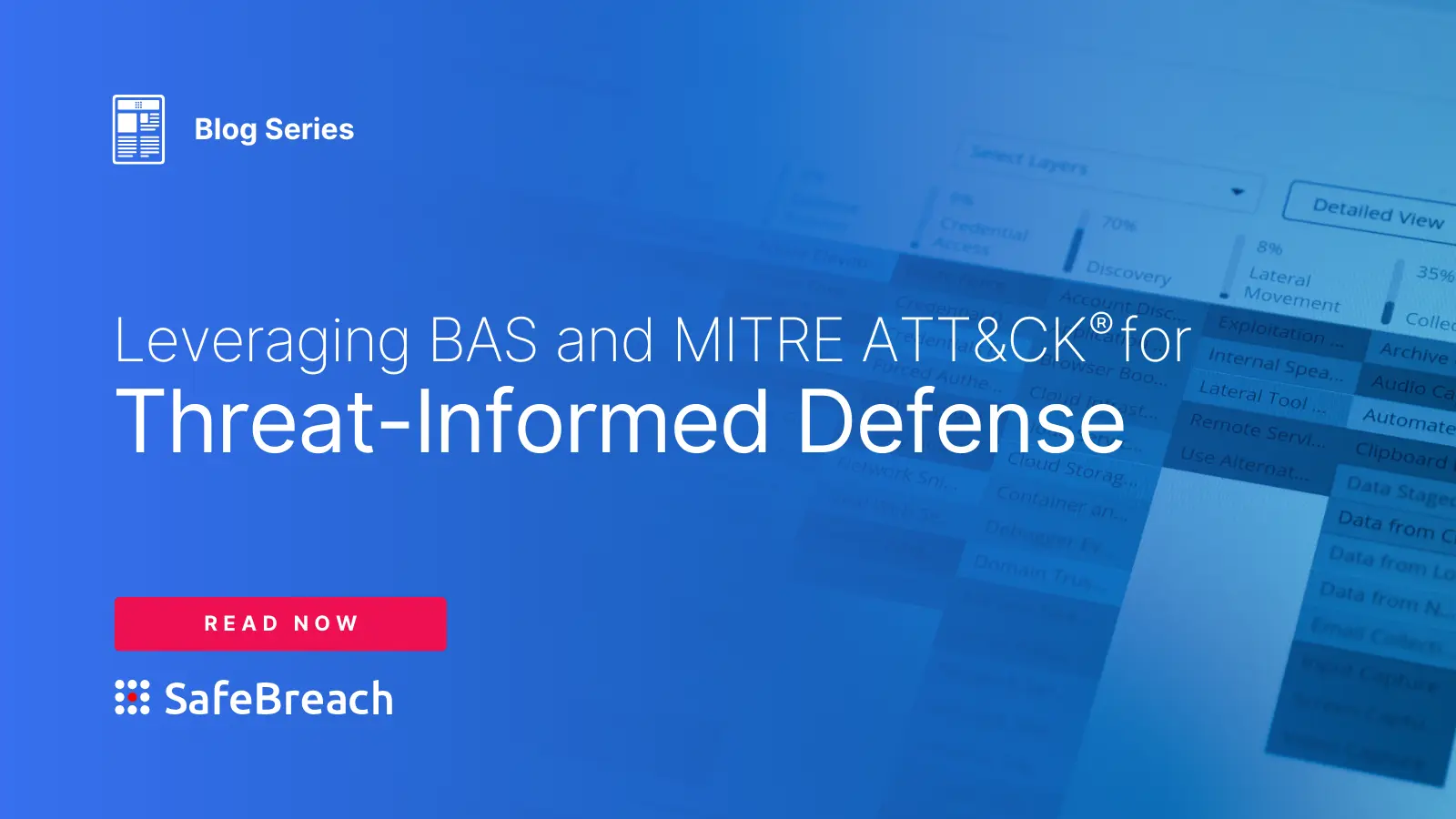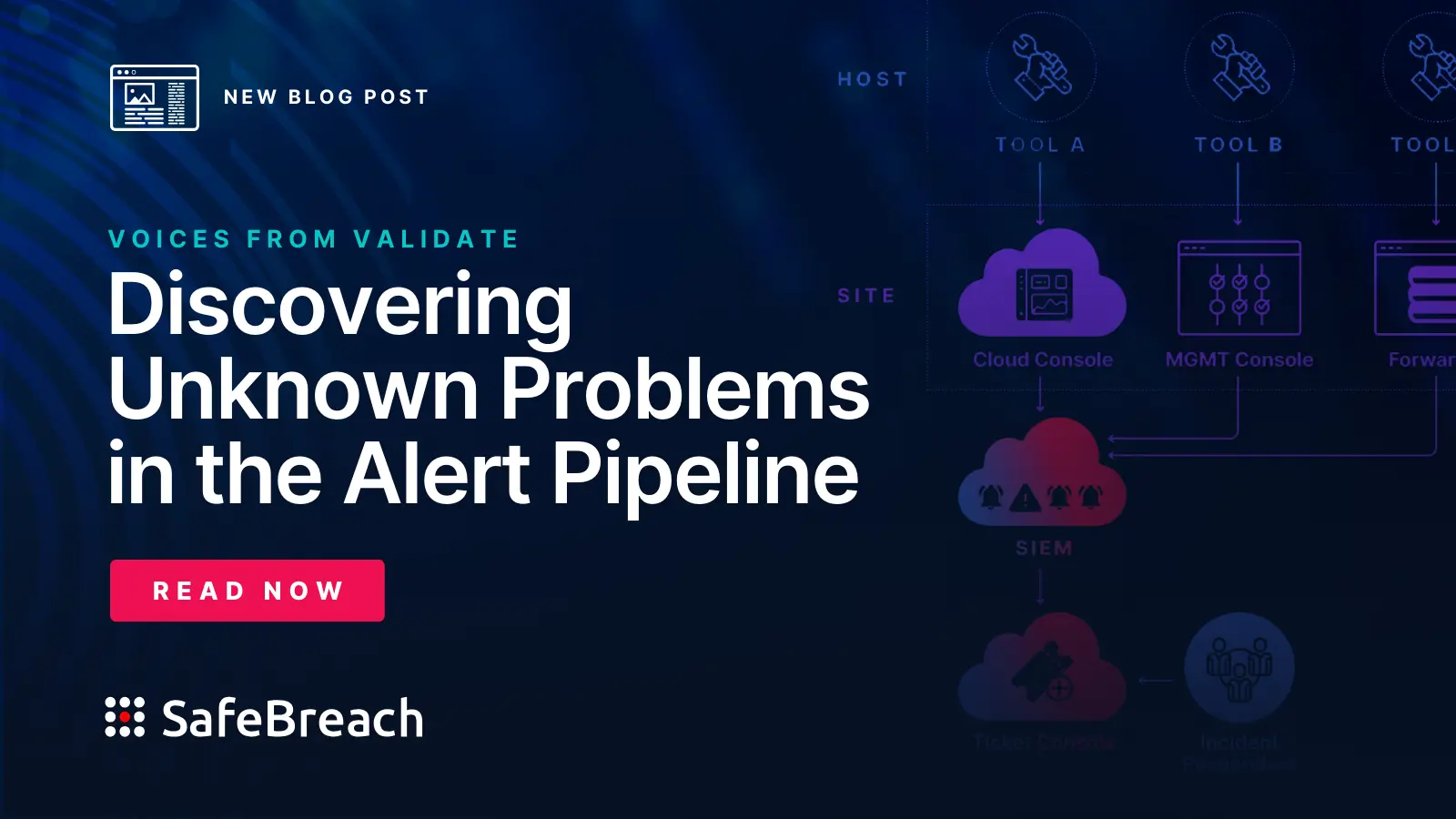
The first deadline for compliance with the Payment Card Industry Data Security Standard (PCI DSS) Version 4.0 is March 31, 2024. If your v4.0 compliance initiative is not already underway, it should be a major priority over the next 2–3 quarters. As you’re thinking about what needs to be done to meet the PCI DSS deadline, it’s a good time to re-examine your overall approach to PCI compliance and ensure you’re not getting caught in a couple of major pitfalls that can leave you exposed; namely, treating compliance as an annual exercise, and equating compliance with protection. We’ll discuss each of these below, as well as how a breach and attack (BAS) platform can make your PCI DSS compliance easier and decrease risk in your environment.
Annual Deadlines Can Create Security Risk
Compliance is often by annual deadlines. Many regulations, including PCI DSS, require organizations to undergo an annual audit as proof of compliance and may include requirements for annual penetration testing. It’s important to be mindful of risks created by a schedule like this. Annual audits or pen tests only reflect your security posture at the point in time at which the audit or test is conducted. Drift from baseline policies and configurations is a fact of life in information security, but the more frequently you assess your environment against your baseline, the lower the risk of significant drift, and the easier it is to realign the environment with the baseline.
Focusing on Continuous PCI Compliance
What is needed is a focus on “continuous compliance,” and a BAS platform can be a great help to security teams challenged with maintaining compliance with PCI DSS. BAS can continuously test your security controls against real-world attack scenarios to ensure (and document for audit purposes) that controls required for PCI DSS compliance are operating as expected. Maintaining a continuous view of your environment in this way enables teams to react much more quickly when something changes, and evolves compliance toward a steady state, not an annual deadline.
Compliant Does Not Mean Protected
It’s also important not to equate “compliant” with “protected”. While standardized security requirements provide tremendous value in driving consistent practices within an industry, it’s important to remember that security regulations reflect the lowest acceptable level of security policies and protections, not what is optimal for your unique environment. Think of compliance as the floor, not the ceiling, of your security strategy. How many organizations have passed a PCI audit, only to be seen in the headlines due to a major breach? Certified PCI-compliant companies continue to suffer theft of cardholder data.
BAS Increases Confidence Cardholder Data is Secure
Beyond simply validating that you are meeting certain minimum requirements for PCI DSS compliance, the attack scenarios simulated by a BAS platform can accurately measure whether your Cardholder Data Environment (CDE) is actually protected against unauthorized internal and external access. BAS validates security controls by simulating sophisticated real-world attacks against your environment, testing external and insider threat vectors, and attempting malicious actions such as lateral movement and data exfiltration (all in a safe and controlled manner).
By automatically running simulated attacks, BAS enables an enterprise to continuously validate their security posture, identify risks, and challenge the efficacy of security controls—without creating risk of disruption or data loss in production environments. Some of the specific benefits of using BAS to assist with PCI DSS compliance include:
- Continuously validates your security posture: BAS platforms can run simulations continuously or very frequently, so security teams know at all times—not just annually or biannually—whether security measures are working properly. This enables security teams to continuously address security gaps with respect to the CDE rather than face a mountain of remediation tasks in preparation for an audit.
- Reduces or validates the true scope of compliance: Changes in system or network configuration—for example, a new firewall rule that permits connectivity between a system in the CDE and another system—could bring additional parts of the environment into scope for PCI DSS. Unauthorized, undocumented or forgotten changes are inevitable and can open a gap and unknowingly bring a CDE into scope. BAS can be used to validate connectivity is not possible, thus reducing or validating the true scope of compliance.
- Lets you understand true PCI exposure: BAS uses a black-box approach, (i.e. no prior knowledge of the environment is required) and incorporates a library of attack scenarios including brute force, exploits, malware, and remote access tools. BAS provides a more accurate real-world sense of what a hacker can do in an organization’s environment, accurately predicting if the PCI environment can be breached and the exposure of data if that were to occur. Through this an organization is better able to accurately measure their level of risk.
- Proactively updates your PCI scope: Changes—whether new systems, new users or organizational changes (M&A)—can create security and compliance gaps. Compound this with the accelerated rate of change and you add an infinite multiplier to the creation of gaps. BAS can pinpoint new PCI requirements for the environment due to change. For example, imagine that simulators are placed in three zones in the data center—segment A, segment B, and segment C. Today, credit card data may reside only in Segment A. If changes are made such that Segment B will soon gain access to credit card data, BAS analysis can provide an immediate understanding of the impact of this change, so that security teams can proactively update their PCI scope and implement appropriate security controls. Identifying these gaps and having the ability to proactively remediate them ahead of an audit saves a lot of headaches for security teams. Essentially, you have continuous validation of segmentation.
- Validates compensating controls: Compensating controls may be considered for most PCI DSS requirements when an organization cannot meet a requirement explicitly as stated due to legitimate technical or documented business constraints. When this occurs, the organization can mitigate the risks associated with the requirement via compensating security controls. BAS can demonstrate to PCI auditors that these compensating controls are working and are effective alternatives… or they can help organizations identify where they are needed and where they can be placed.
To learn more about how SafeBreach can help validate your compliance with specific PCI DSS requirements, and to ensure your cardholder data is protected, not just compliant, download our white paper, How Breach and Attack Simulation Supports Continuous PCI Compliance or schedule a discussion with an expert.
